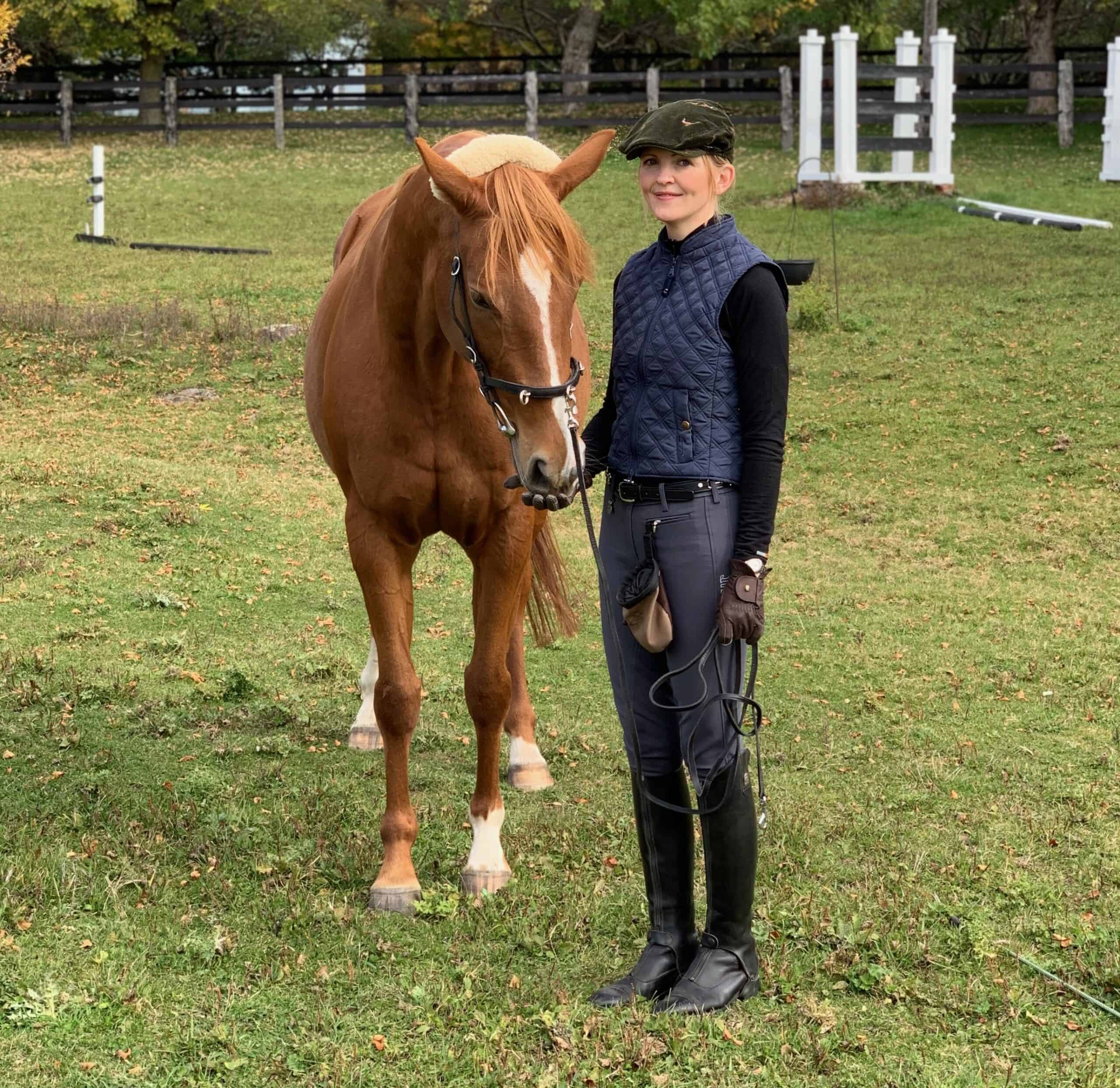Horse Management Practices, Sleep Quality, and Performance
- Topics: Article, Horse Care, Welfare and Industry

Why Do Horses Need ‘Good’ Sleep?
“Sleep is part of every species’ ethogram and vital for the performance and the well-being of an individual, as it serves the physical and psychological regeneration,” says Christine Fuchs, PhD, DVM, of the Animal Hospital Luesche, in Germany. “While the horses sleep, the brain processes the events and information of the preceding hours and days.”
Polyphasic sleep occurs in several stages: light sleep, deep sleep (non-rapid-eye-movement sleep), and REM sleep (dream sleep), adds Fuchs.
While horses can enter and complete non-REM phases standing upright, they must lie down to complete the REM phase, either on their chest/abdomen (sternal recumbency) with their muzzle resting or flat on one side (lateral recumbency).
“If horses don’t lie down at all for about 10 days or more, the lack of REM sleep is so profound that they fall into REM sleep while standing,” Fuchs notes. Acute or chronic pain or inadequate resting areas might cause horses to enter but not complete the REM phase while standing, she says, which usually results in the horse’s collapse due to atonia (a state in which most muscles in the body relax) and can potentially cause serious injuries.
‘Good’ Sleep Is Performance- and Health-Enhancing
Sleep quality and quantity are tightly connected. For instance, a chronic lack of sleep can compromise immunity and even lead to death. “During the REM sleep phase, the brain processes the ‘emotional’ events which occur during the day,” says Fuchs. “If that sleep stage is missing, horses might show changes in their usual behaviors (e.g., an overall stressed demeanor, aggression, increased sleepiness).” Therefore, “good” sleep contributes to better quality of life and performance.
It can take several weeks or even months to record a significant performance decline due to poor sleep, making it difficult to identify as the underlying cause. Regarding welfare, researchers know these horses suffer immensely, notes Fuchs. Recumbent sleep deprivation is often rooted in inadequate horse husbandry practices, she says, and these horses frequently develop behavioral issues such as cribbing, weaving, or stall-walking.
What Is the Link Between Horse Management Practices, Sleep, and Performance?
Many fundamental stable management practices contribute to horse health and well-being. Environmental factors, such as the size, availability, cleanliness, and location of the resting area, bedding type and depth, exposure to light and stressors such as constant noise, and, if group-housed, the rank of the horses within the herd, can impact sleep behavior. Horses might be reluctant to lie down due to painful conditions such as osteoarthritic joints, back or sacroiliac pain, gastric ulcers, or severe equine asthma, says Fuchs. Other physiological factors, such as the horse’s core body temperature, can also influence sleep profiles.
Researchers have determined that relaxed horses spend more time in lateral recumbency, which might increase the amount of “good” REM sleep. Making horses feel comfortable by managing their bedding and environment appropriately can improve their sleep, welfare, and performance.
“Research suggests that a deeper bed results in more recumbent behavior (i.e., lying down), which is very important for horses to be able to achieve rapid eye movement sleep,” says Linda Greening, PhD candidate at the University of the West of England and lecturer/researcher in the Equine Department at Hartpury University, in the U.K. “This sleep state is linked to memory consolidation. In terms of training for performance, I would say that providing an environment that encourages horses to lie down can only be a good thing.”
Greening and her team replicated bedding depth research using straw and shavings in separate studies. “We found that horses tend to lie down more when these bedding types are deeper, and a depth of (more than) 10 centimeters (just under 4 inches) covering at least half of the floor of the stable or stall helps with this,” she adds. When the bedding depth was increased from 4 to 6 inches in the study, horses spent more time in lateral recumbency.
“We are currently investigating the influence of lighting on sleep, Greening adds.
Artificial stable lighting can negatively impact horses’ ability to enter sleep stages and might reduce recumbent resting behavior, she says. Barn managers and owners might need to consider how they perform late-night checks in horse barns because artificial lighting at night might affect melatonin cycles and horses’ sleep patterns.
“We have started to look at (blanketing’s links) to core body temperature, as this is another main sleep cue,” says Greening. Blanketing can impact core body temperature, which, like darkness, is a significant natural cue for sleep. Studies in humans have shown a link between the reduction of core body temperature and the onset of sleep. Blanketing horses is a popular practice, and research on how blankets affect horses’ ability to thermoregulate is still in the early stages.
“Aside from these factors, age, injury, appropriate lying space (especially during turnout), familiarity with the environment, seasonality, and sex (e.g., a mare with foal at foot) can all influence how horses sleep,” she adds.
Take-Home Message
Researchers say REM sleep is vital for horse health, performance, and well-being. Factors such as bedding depth, resting area size, and management of certain health conditions can positively influence horse sleep and enhance overall cognitive and physical performance in equine athletes. Lighting and the horse’s core body temperature can also influence sleep patterns and are factors to consider in general horse management practices.

Written by:
Tanja Bornmann
Related Articles
Stay on top of the most recent Horse Health news with















